They say that if you don’t sum up the results of the previous year, then the new one won’t come. Of course, this is a joke! But all of us really love to count the achievements of the year, which is almost over, and almost to the sound of the chimes, make a to-do list for the next year. We met with experts in music, theatre, traditional culture, art, literature and cinema to recall the most important cultural events and trends of 2024 and make a wish list for 2025.
We are publishing the full text of the discussion.
Сontent
Belarusian Council for Culture
Cinema
Literature
Music
Theater
Traditional Culture
Art
The Head of the Belarusian Council for Culture Siarhiej Budkin: “Culture is what makes us who we really are”
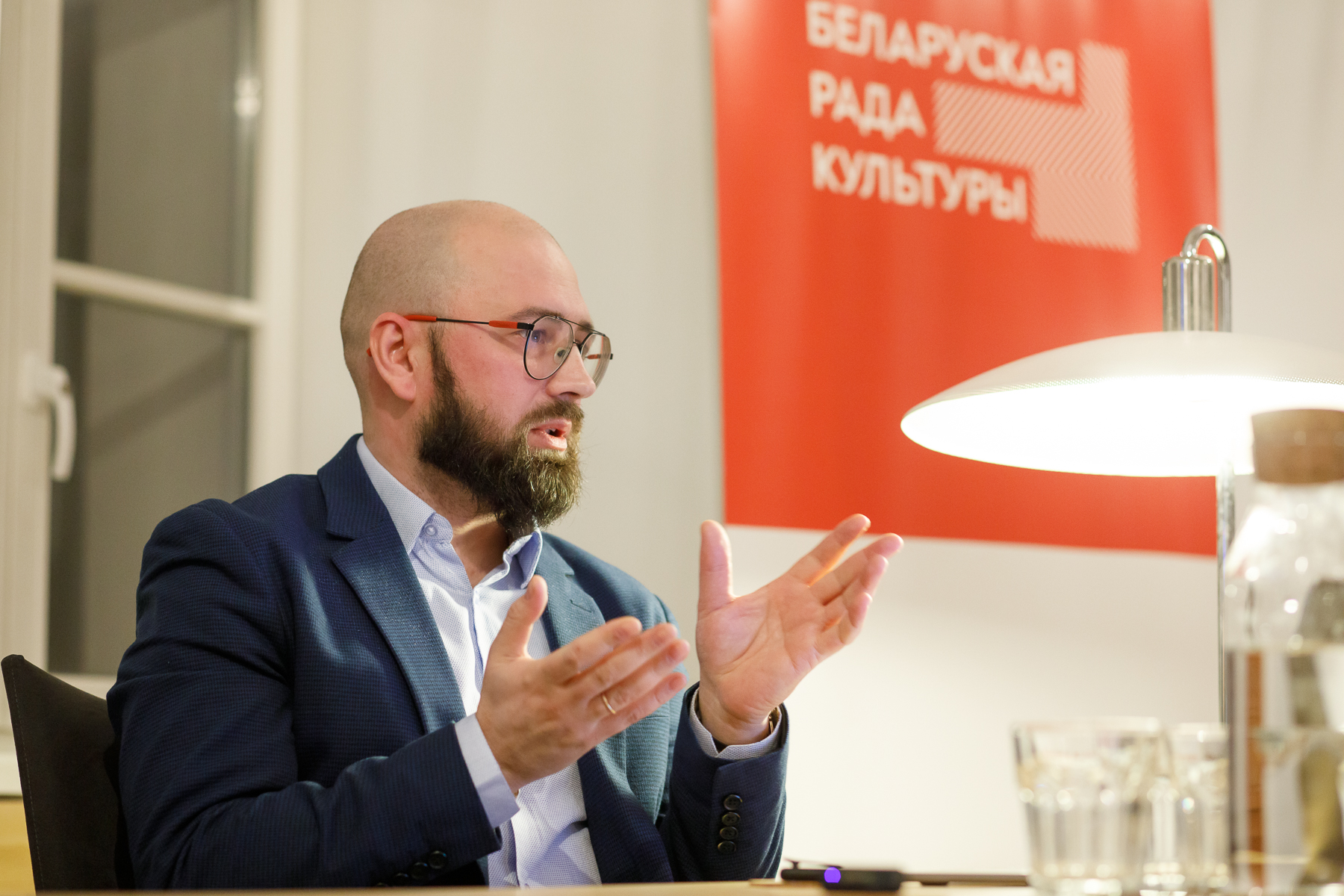
– The events of 2024 confirmed that everything is fine with Belarusian culture. You can’t sweep it under the rug, you can’t ban it, you can’t subjugate it. It’s everywhere, it’s inside us, it makes us who we are. It’s very important that we all, regardless of where we are, act for the benefit of Belarusian space. It is common to both those who left and those who remain in the country.
That is why it is so important for us to talk about the importance of culture at all levels and, accordingly, to search for and find resources for the projects of Belarusian creators. It is so important to promote the emergence of new ideas and support the activities of new communities in various fields. Only common causes can guarantee the development and sustainability of Belarusian cultural initiatives. That is why it is so important to research needs and analyze the cultural field, to promote the education and expansion of contacts of Belarusian creators and managers. And, of course, to help creators who find themselves in difficult life circumstances.
I am very pleased that the Belarusian Council for Culture contributed to many important initiatives this year. I would like to highlight:
* the first graduation of the Art Management School;
* the Belarusian Magistrates project and the launch of the Club of Belarusian Patrons – a model for financing cultural initiatives from private donors;
* supporting Sekktor (through the creation of a web platform) and the Cultural Code community;
* the work of our analytical department and the emergency assistance department;
* the Octopus project, which gave life to many educational initiatives;
* of course, the ArtPower Belarus programme, which we implement together with the Danish Cultural Institute.
There is a lot to say about each of the mentioned directions, but I will focus on ArtPower Belarus and answer perhaps the most popular question: who received support?
Especially for this meeting, we have prepared information on the main areas of support (which will also be discussed today during this roundtable) with examples of supported projects. We will summarize the results of ArtPower Belarus in February 2025, when the project is completed.
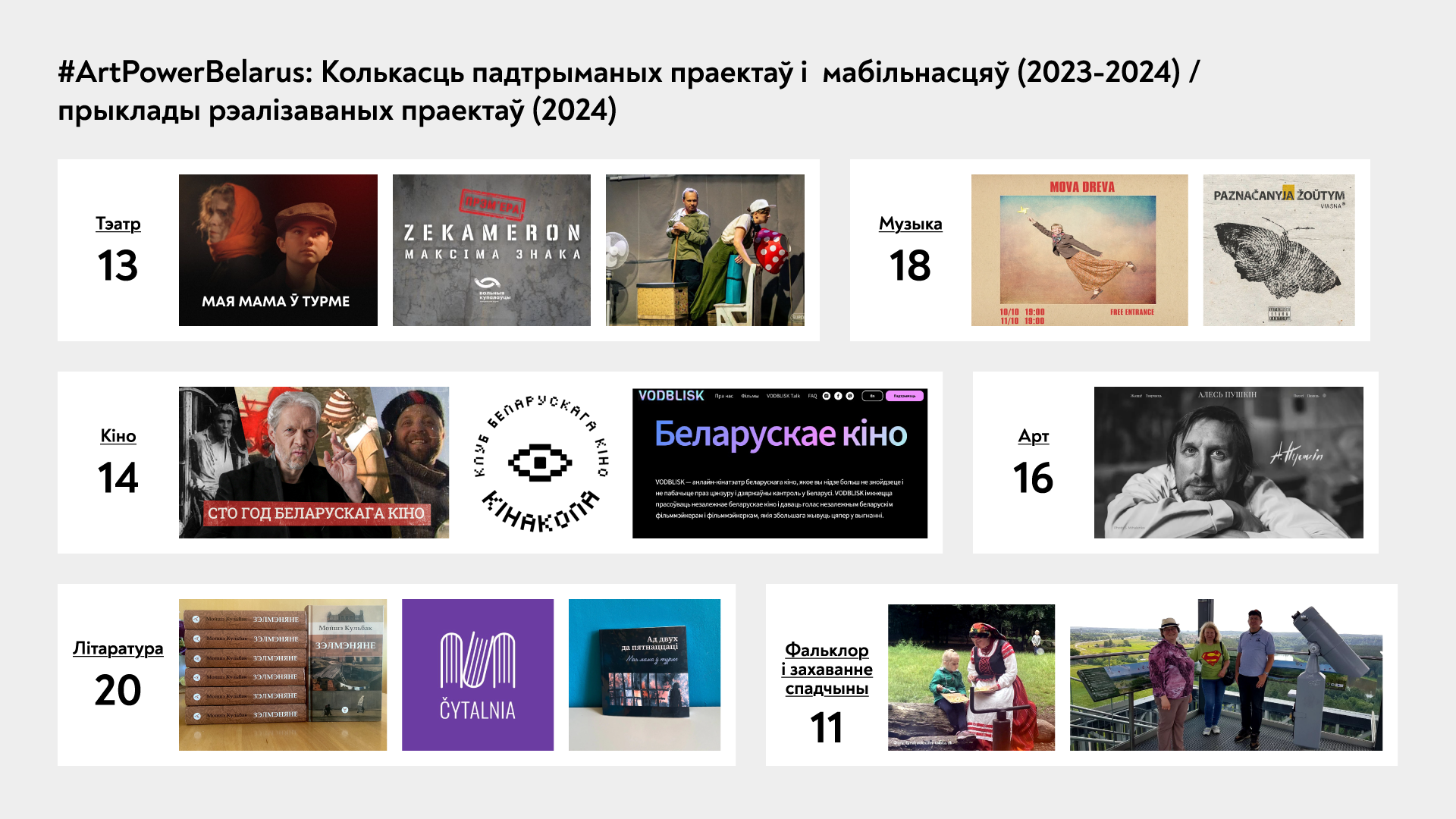
Not so long ago, within the framework of ArtPower Belarus, we also presented a research of the state of the cultural field today. 266 organizations working in the field – for me, this is the main figure. The public version of the research is available on our updated website. There you will find publications, reviews and documents that will help you better understand what is happening in Belarusian culture.
Film critic, co-founder of the Red Heather Film Critics Award and the Belarusian Independent Film Academy Irena Kaciałovič: “After 2020, the division of Belarusian cinema has become categorical”
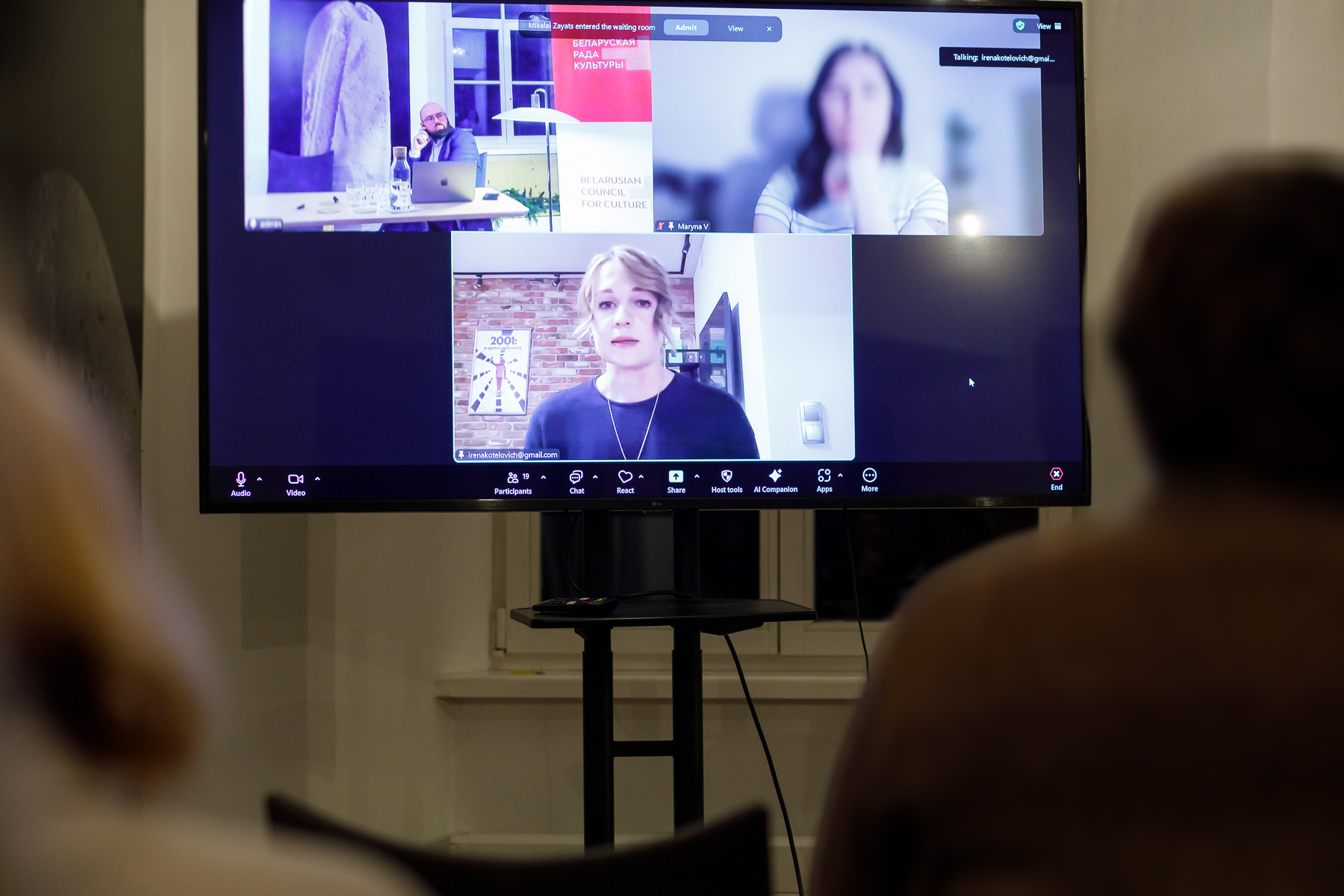
– The results of 2024 in cinema may not be very festive.
100: this is how many years Belarusian cinema turned this year on December 17.
1: so many full-length Belarusian feature films were released in independent cinema on the big screen in 2024.
3: so many independent film festivals were held during the year.
4: so many Belarusfilm films were awarded by the jury at the Listapad festival, which Belarusfilm also organizes.
13: so many Belarusian films were awarded the Red Heather, Belarusian Film Critics Award in February at the Berlinale European Film Market.
7: so many new film projects took part in the pitching of Belarusian authors at the Berlinale European Film Market, and 10 (of which 9 are feature films) were selected for the next pitching, which will take place in the summer.
Belarusian cinema turns 100 this year (see the 50 best Belarusian films), and this century our cinema met with such a division as it had never been before. Most of these hundred years fell on the Soviet era, when there was a virtual monopoly on the part of the film studio Belarusfilm (it worked under different names). In the already independent Belarus, a distinct independent cinema also appeared, then the state film studio and independent cinema intersected, existing in the same space and on the same platforms. And after 2020, this division became categorical.
Thus, the trends have appeared regarding state-funded cinema (Belarusfilm cinema).
- Increasing instrumentalization for propaganda purposes and ever closer ties with Russian colleagues. The new Minister of Culture quotes Lenin’s words about cinema as the most important of the arts, and Belarusfilm has managed to move on to creating openly propagandistic films (for example, the anti-Polish film On the Other Bank, 2023).
- The Listapad Film Festival is no longer considered a celebration of cinema – art does not seem to be a criterion here, but the programmes reflect the regime’s foreign policy.
- The priority is given to unknown Russian directors. For example, On the Other Bank was directed by Andrei Khrulyov, and the film stars Russian actors. The film The Black Castle (2024), based on the novel by Uladzimir Karatkievič, was directed by Kirill Kuzin, a Russian director who is not even known to Google. The Minister of Culture promised a project “that will really make a splash.” Let’s see who will become its director.
As for independent cinema, it remains a space of sporadic victories, and in this sense, the trends I voiced last year remain relevant this year.
- Filmmakers are holding on to Belarusian film communities abroad, the film academy is expanding, and the BFN is organizing a large-scale congress of filmmakers near Berlin. And filmmakers are still looking for ways to exist in the new conditions, it’s just that this process and this discussion have moved further.
- Belarusian directors and film projects still cannot count on seed funding from their country or something that would somehow replace it, and the ArtPower Belarus programme in its first edition supported mostly non-cinematic projects. In this state of confusion and pain, we are working on roadmaps for the European Union and discussing other possible ways for the foundation to emerge, but so far everything is more of a fantasy than a potential reality.
What have we lost this year and what have we gained? The most painful loss, in my opinion, is the loss of people, professionals who are forced to either go into simple genres or leave the profession altogether, instead of developing their own documentary or feature projects. At the same time, they often have ideas, developments, but do not have funding. Therefore, the loss is everything that did not start, did not continue, did not end due to unfavourable conditions, everything that you and I will not see on the big screen as a result.
At the same time, we have a positive precedent – Mara Tamkovič’s film Under the Grey Sky, shot by a Belarusian director and about Belarus, but with money from the Polish budget. On the one hand, we have a real example of how film production can work in the near future, on the other – Mara is still more of an exception than a rule: she is a Polish citizen, has extensive experience in the Polish film industry, so her example may not necessarily be widely implemented.
It is pleasing that Belarusian filmmakers are developing their own traditions and practices in a new reality. Thus, this year the second edition of the Belarusian Film Critics Award took place, which was held at a new level for itself – within the European Film Market at the Berlin International Film Festival Berlinale.
I would call the premiere of the film Under the Grey Sky at the TriBeCa festival in New York the event of the year for viewers. The Bulbamovie film festival, which took place in November and was financed by the Ministry of Culture of Poland, was also significant.
As a wish for next year I’d like to mention the creation of the Film Fund for Belarusian authors.
Press Secretary of the International Union of Belarusian Writers, Editor-in-Chief of bellit.info Cichan Čarniakievič: “The presence of iconic works of ancient epic, which have not yet appeared in Belarusian, stands out”
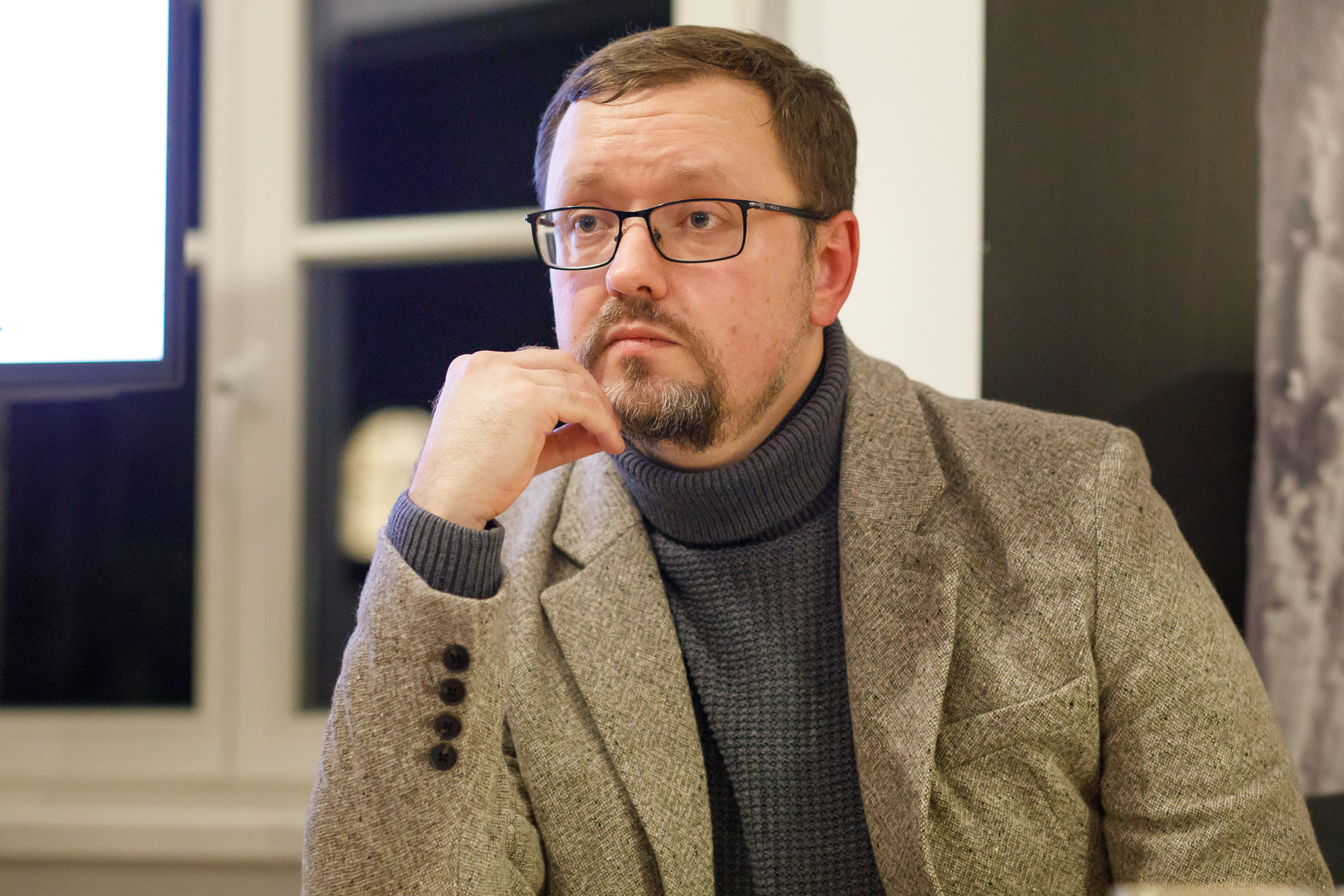
– My professional interest as the editor of the bellit.info website is mainly focused on Belarusian book publishing in its various manifestations and genres – most of all it’s devoted to the publication of fiction and non-fiction books. This year, I had about 140 books in my field of vision.
The largest part of them are translations, which is natural for any country. 35 editions of translations reflect a fairly wide palette of genres, but we note that in 2024, the presence of iconic works of ancient epic, which have not yet appeared in Belarusian, stands out. First of all, this is the work of Lavon Barščeŭski, who published The Iliad, The Epic of Gilgamesh, and one of the Maya peoples epic Popol Vuh. The publication of the Scandinavian epic in translations by Jaŭhien Papakul also continued. Of the most popular languages from which books were translated, English, German, Polish, and Ukrainian stand out. Of the rather rare ones, Lithuanian is becoming increasingly popular (several editions of bright modern prose have already been published). In general, translated prose is the main genre. The visible presence of world-famous authors – Stephen King, J. R.R. Tolkien, Erich Maria Remarque, Agatha Christie – is aimed at the mass reader.
As for Belarusian publications, 20 books of poetry and 15 of prose were published this year. Obviously, prose is in a state of crisis, since writing voluminous texts requires corresponding efforts. The main prose writers of the year are Alhierd Bacharevič, Siarhiej Dubaviec and Vinceś Mudroŭ, who published two books each. In poetry, the main publishing house remains the Berlin initiative of Dźmitryj Strocaŭ, hochroth minsk, which published 8 books. Of the poetry collections, it is worth noting the book of poems by Siarhiej Pryłucki Nothing Not Fearful, written in the footsteps of what he experienced during the occupation of Bucha. I would name Golden by Natalla Kučmiel, King Stakh’s Wild Hunt, Poems for the Opera by Andrej Chadanovič, and Without a Homeland by Uładzimir Niaklajeŭ as bright poetic publications of the year.
In general, if we consider Belarusian publications themselves, only 25% of poetry books were published in Belarus, and one-third of prose books. The translation ratio is 50% to 50%.
Most popular science and non-fiction books were published in Belarus this year: 12 out of 22 books were published here. Scientific literature is still supported by the state book publishing segment and is a space where it is still possible to implement cultural projects. Books which are published in this area are free from propaganda, so they do not come into contact with political factors. It is more about conservation practices, when culture and history are considered safe only in a retrospective narrative. Most books in this sector are devoted to traditional culture, ethnography, and folklore. Of the fundamental scientific publications of the year it’s worth mentioning the encyclopedic guide The Book of Cemeteries. Belarusian Burials Abroad by Natalla Hardzijenka and Lavon Jurevič, Dictionary of Belarusian Pseudonyms and Cryptonyms by Janka Sałamievič, a book of memoirs about Aleś Razanaŭ Through Myself to the Universe and Soviet Belarus edited by Michaś Čarot by Hanna Sieviaryniec.
In the field of multilingual literature, the activities of the publishing house Mianie niama stand out, where this year books written by Belarusian authors in Russian are mostly published. Translations of the popular Russian-language author Saša Filipienka and books in the Paliessie dialect, as well as a collection of poems in Yiddish, have also appeared.
In children’s literature, the majority of books, 14 out of 21, are published by Belarusian authors, a third of the books are translations. There is very little teenage literature, as was last year. In general, fewer good children’s books are published than we would like. This is due to the fact that it is difficult for Belarusian publishers abroad to work on such books due to the high cost of paper and printing, and the inability to pay for high-quality illustrations. At the same time, foreign support for children’s books in Belarusian is noticeably small this year, so there are actually few translated books.
Cultural manager and music journalist Alena Varaniec: “Everyone acts individually and does things the way they see fit”
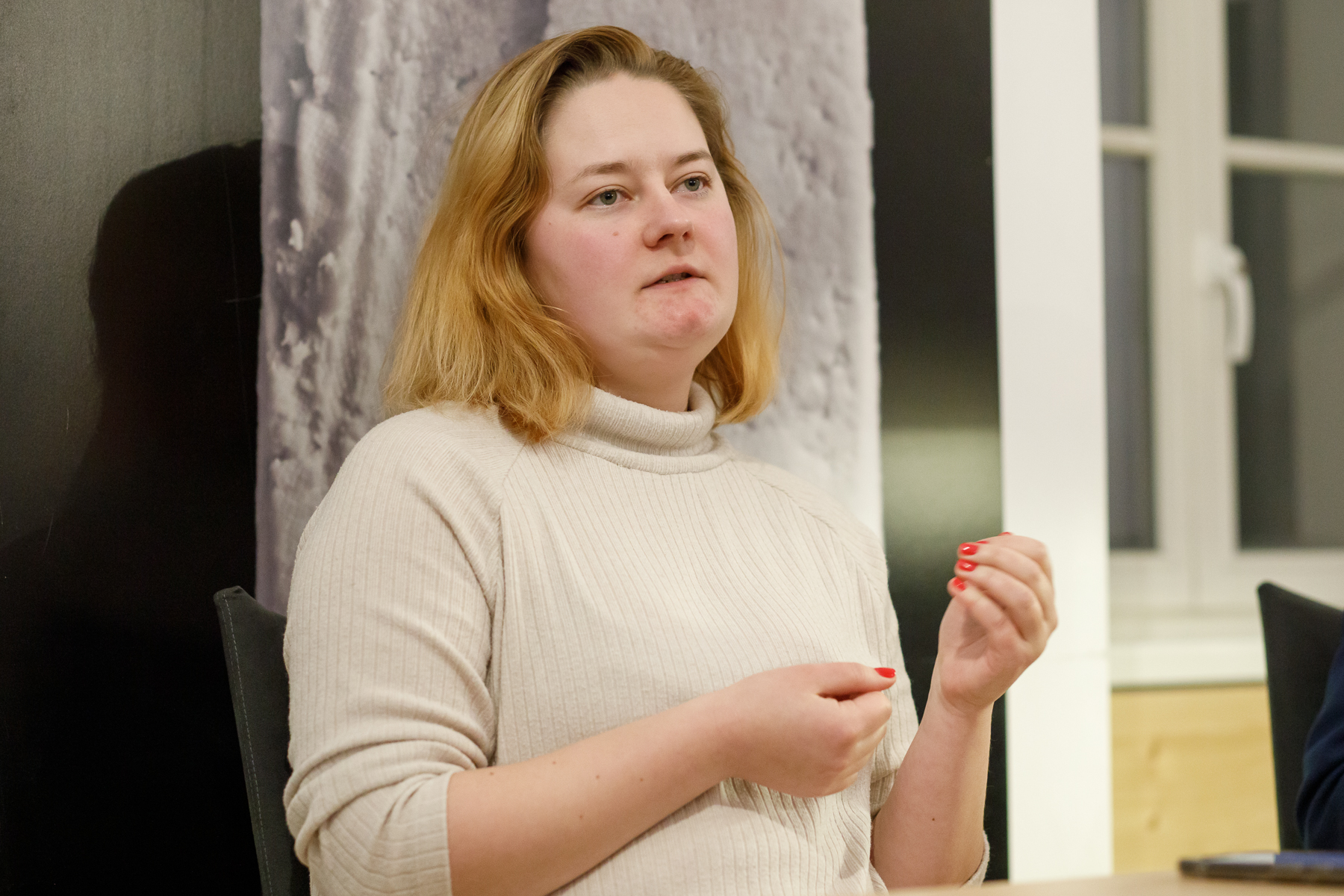
– The year was rich in outstanding musical releases, and this is the greatest treasure and result of the year. Among the examples: the releases by Intelligency and Zui, mini-albums by Koob and “Мутнаевока” (Mutnajevoka), debut albums by projects Parus and VVaxplay. The first Belarusian-language album was released by “Петля пристрастия” (Petlya Pristrastiya), which influenced not only music, but also the Belarusianization of the space as a whole. The bands Molchat doma and Nürnberg released some great albums. The successes of Belarusian post-punk have already become something familiar, but I still suggest not ignoring them. This year, these musicians had big European tours, played several concerts in China, where it is quite difficult to gather an audience in principle. Nürnberg also traveled as far as Latin America.
A pleasant trend for 2024 that is beginning to emerge is an increase in the number of collaborations between Belarusian artists and foreigners. For example, the band Soyuz recorded a single with a Swedish musician Sven Wunder and a singer Asha Puthli from India. The Podlasie duo Sw@da and Niczos invited a singer from Angola to collaborate with the band. Palina wrote music for the French-Moroccan clothing brand Casablanca, and Polish Vogue wrote an article about the Belarusian girls’ choir Spievy. All of this is expectedly centred on emigration, and although we have been trying to get in touch for a long time, which is unusual for Belarusians, circumstances have done their job, and it is great that we are not closed in on ourselves.
A less positive trend in the musical direction is its chaotic movement. Everyone acts separately and does things the way they see fit. This has been a problem for many years. The musicians have never formed a specialized organization, we can only mention a few initiatives that unite them. The Belarus Outside Sound System community has aspirations to take on a certain representative role. They managed to hold a few events and launch a Telegram channel where they collect announcements with opportunities for musicians. But that’s all for now. As far as I know, Belarus Outside Sound System has certain plans and ideas, but so far it cannot find funding for them. It would be amazing if everything worked out in a flash, and this is one of my main wishes and expectations.
The third and most unpleasant trend is restrictions on performances in Belarus. The situation is not new, noticeable difficulties began back in 2022, when the register of organizers was introduced – a list of those who can organize concerts. During this time, people managed to identify partners from this list or intermediaries among state institutions. But in recent months, the situation has worsened significantly. The number of refusals to issue tour certificates has been increasing, and the terms of consideration are being delayed. This, of course, greatly hinders, and few alternative events are taking place.
In contrast: concerts of Russian pop music are successfully held. And these are not only forced state things like the Slavic Bazaar in Viciebsk. This year, several new commercial festivals have appeared in Belarus, where the line-up is mostly Russian, and each of them has gathered a large number of listeners. The record is traditionally held by the Viva Braslav festival – about 30 thousand people come there. To make it clear what kind of music is played there: Maxim, Kristina Si, Klava Koka…
The Solncestoyanie rock festival in Pružany, which featured Kipelov, Samoilov and Babunets, attracted more than 20,000 people. Here’s what one independent Belarusian musician wrote on his social media (for security reasons, I won’t mention his name): “The recording was made at an apartment сoncert in Minsk. There were 15 people present.”
I don’t want the overall picture to look like a scorched earth, and it isn’t. People sometimes really do the impossible, even take risks. But it’s a fact that making music in Belarus is very difficult now.
Returning to the positive, I will name the top 3 artists of this year:
* the band “Петля пристрастия” (“Petlya Pristrastiya”) – for the debut Belarusian-language album and superposition;
* the band Molchat Doma – for its global success and for the record number of controversies regarding Belarusian music in the information space;
* the female folk duo Ralla, whom I consider the discovery of the year, for managing to hook even those who don’t like folk music.
And as for wishes for the future, I will add here the emergence of any external initiatives and ideas that would launch a musical movement. In addition to the releases themselves, these could be articles, criticism, ratings, competitions, cooperation with other spheres of culture and non-culture, any special projects. Now, in the music industry, it’s mostly the musicians themselves who are making the most of it. Adding someone else will make life easier.
Theatre critic Dzianis Marcinovič: “We are observing the eternal 2020 on stage”
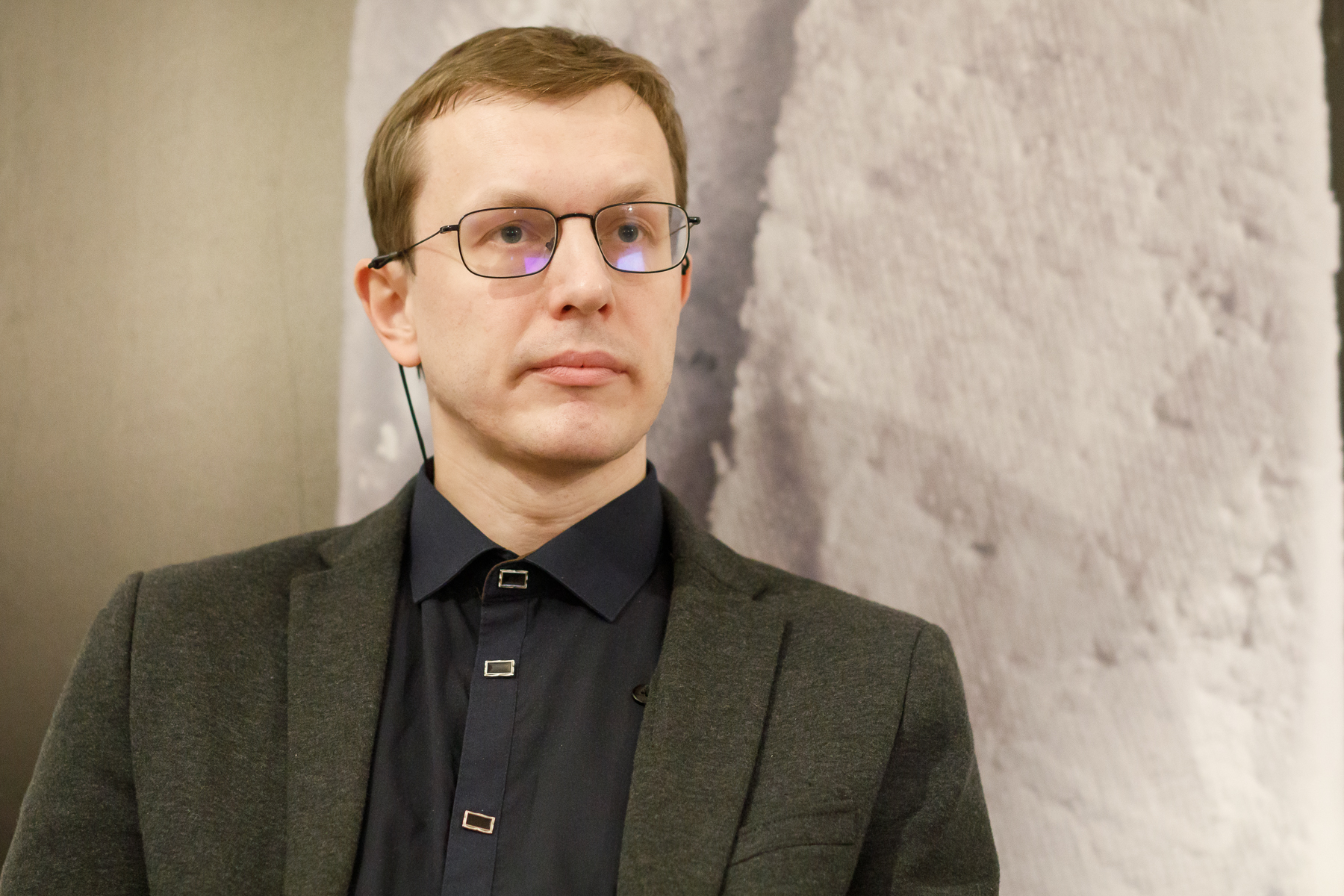
– Let’s recall what happened in the Belarusian theatre last year. We noted five trends:
- nullification (rejection of the legacy of the 2010s) and – as its continuation – rewriting history (crossing out the names of “undesirable creators” from everywhere);
- the influence of Russia (tours of domestic theatre troupes in this country, return visits, productions of plays by Russian playwrights in our country, and promotion of Russian themes);
- attention to the military theme in the repertoire;
- Russification (abandonment of Belarusian-language performances in favour of Russian-language ones).
All of these trends remained relevant in 2024. Moreover, they risk remaining relevant in 2025. However, this year also had its relative novelties.
Active repression. There is an impression that repression in the theatre sphere has become more active and, compared to last year, is having a greater impact on the theatrical process.
6: so many specialists were fired or left the Republican Theatre of Belarusian Drama in November. These are Maksim Brahiniec, Dźmitryj Davidovič, Arciom Kureń, Pavieł Šykunoŭ, Hanna Siemianiaka and Dzianis Aŭcharenka. This led to the disappearance of 7 performances from the repertoire. We lost the RTBD in its current form. This is a different theatre with a different repertoire.
5: the number of theatres in which the management has not changed since 2020. There are 28 theatres in Belarus today. Of these, the previous management remains in only five theatres. These are two in the capital (the Gorky Theatre and the Film Actor Theatre), one regional (the Hrodna Puppet Theatre) and two provincial (Palieski Drama Theatre in Pinsk and Slonim Drama Theatre). Naturally, not all examples of management changes are related to politics, but we have witnessed a staff revolution. None of the newcomers led their teams to prosperity and breakthrough. If the situation did not worsen under their leadership, that’s good enough.
Staff shortage. For example, in April, the director of the capital’s Puppet Theatre, Dźmitryj Siamionaŭ, was sent for promotion to the Minsk City Executive Committee. The position remained vacant until October, when it was taken by Taćciana Toŭścik, a teacher at the Academy of Arts. Even earlier, in March, the director of the Musical Theatre, Siarhiej Pukita, was dismissed. And at the time of publication of these results, the position is vacant. At least since the summer, after the dismissal of Dźmitryj Harelik, the position of director of the Homieĺ Puppet Theatre has been vacant. It turns out that there is no staff reserve, and there are no people willing to take the positions either. But the dismissals continue.
Recently, more and more actors are unable to work in their specialty. In Belarus, this is due to repression and/or the actual ban on the activities of private theatre, and abroad, this is due to the lack of financial resources. We are witnessing a mass exodus of actors into education and the creation of a huge number of theatre groups and studios. This allows them (at least partially) to remain in the profession and hope that new staff will come to the stage in the future.
Semi-amateur theatre groups are becoming increasingly popular in Belarus (Inclusive Theatre I, So.Vremennik, Theatre on the Niamiha). In the latter two, most of the actors do not have higher theatre education, their education is limited to theatre school (previously this was nonsense for the capital’s troupes).
Productions dedicated to 2020 continue to be actively created. On the one hand, the events of 2020 are a significant topic that still hurts. On the other hand, through the emphasis on it, we see an artificial narrowing of the subject matter of potential performances, we observe the eternal 2020 on stage. Meanwhile, life does not stand still, a number of other problems and challenges appear, and the theatre actually does not offer an alternative.
The vast majority of the identified trends are negative. I will also note some positive points.
In July of this year, the authorities liquidated the Belarusian centre of UNIMA (the International Union of Puppet Theatre Workers, an affiliated structure of UNESCO). And theatre critic Nastaśsia Pankratava, through negotiations with the organization’s leadership, achieved an agreement so that the Belarusian branch could be officially included in the category of “in the dormant stage”, which would allow for the rapid restoration of membership in the union under the new conditions.
“Essays on the newest Belarusian theatre: 2010–2020” were published in Belarusian (previously published in Polish). Given certain controversial points, this book is a significant step in the study of domestic theatre and the analysis of performances of the 1990s. In conditions of endless nullification, “Essays” will help our descendants form an idea of what happened during this period.
Back in December 2023, a new troupe appeared in Warsaw – By Teatr, created by Belarusian actors Andrej and Darja Novik, Alaksiej Saprykin, Maryja Piatrovič and others. This year, By Teatr officially registered as a foundation, now it is a theatre bureau that allows creating projects in co-production with Polish partners in their spaces.
This year, Warsaw hosted its second Inex Fest festival. This forum is organized by the Inexkult initiative led by Volha Kulikoŭskaja (with the support of the Polish Ministry of Foreign Affairs). In the current turbulent conditions, any project that does not stop after its debut, but continues and becomes a tradition, evokes positive emotions.
A year ago, during the summing up of the results of 2023, I expressed my wish for the theatre to survive until better times. I think these words are still relevant today.
Folklore expert Viačka Krasulin: “Belarusian holidays today range from being as close to authentic forms as possible to a masquerade rave party in a nightclub”

This year has been rich in events in the field of folklore. There were both positive ones (the inclusion of vycinanka [выцінанка in Belarusian, a Slavic version of the art form of papercutting, popular in Belarus, Poland, and Ukraine] in the UNESCO World Heritage List; numerous celebrations of traditional holidays in Belarus and abroad) and sad ones (the passing of the outstanding folklore teacher Łarysa Ryžkova; the ban on some folklore-oriented events in Belarus; a reduction in funding for the cultural sector in the field of traditional culture).
The general trend is that Belarusians do not let their folklore heritage disappear, organize ceremonial holidays at home and abroad, support the bearers of folklore, and do not let the soul of the Belarusian people fade away.
Compared to the beginning of the new wave of Belarusian migration, which began in 2020, more and more specialists and amateurs in the field of folklore are moving to other countries, while continuing their professional and amateur activities. This is how new cultural folklore-oriented initiatives are being born (ethnocentres, musical chapels, singing groups). There is also a trend of interest among the Belarusian emigrant community in joining nationally oriented cultural manifestations in the Belarusian community. People who have mastered the Belarusian language and become interested in their own culture in 2020 are already trying to continue the process of joining the Belarusian community and getting acquainted with folklore while in emigration.
For 2024, two major centres of activity in the sphere can be clearly distinguished – Warsaw and Vilnius. It is here that a huge number of events related to the traditional culture of Belarusians take place. The situation with Belarusian communities in Poland, Lithuania, Estonia, Georgia, Norway, Great Britain, and the USA is very inspiring. In these countries, there are a lot of initiatives that seek to hold traditional holidays and even invite performers from other diasporas.
We note the great popularity of Kupalle and Kalady / Christmas. Often the form of celebrating these rituals may not preserve traditional elements, some parts of the holidays are changed or only the name is left, while the content can be transformed in any way – from as close as possible to authentic forms to holding a masquerade rave party in a nightclub (nevertheless timed specifically to the traditional Belarusian holiday). And this gives hope that through mainstream forms of using elements of traditional culture, society will reach its more archaic manifestations.
For example, for the Kalady / Christmas period 2024–2025, Vilnius will host about 20 events of different orientations, designed for different audiences and tastes. And, in my opinion, this is great, because it shows the diversity of approaches to the perception and understanding of folklore heritage.
Persons, creative collectives, communities of the year:
- ethnocentre Svitanak (Vilnius);
- singing group Biełaruski cud / “Belarusian Miracle” (Vilnius);
- Siaržuk Doŭhušaŭ and the singing band Kasary;
- Belarusian Sea / “Беларускае мора” (Klaipeda).
Top 3 events:
- informal Kupalle in Warsaw on the banks of the Vistula River;
- Kupalle of the Belarusian club Siabryna on the banks of the Vilija / Neris River with the bands Biełaruski cud, Homan, Svitanak, Oira – the event was attended by Sviatłana Cichanoŭskaja;
- The return of the Spieŭny Schod led by Siaržuk Doŭhušaŭ.
Looking back at 2024, we can say for sure that outside of Belarus, its residents continue their activities in spreading their traditional culture, and these intentions will continue into 2025. I am sure that the Belarusian identity will not be lost and will not dissolve in emigration. I really want Belarusian folklore groups and initiatives to take part in international thematic events more often in 2025, so I wish the collectives to establish work with management and financing, sometimes this is precisely what is lacking. Both in Belarus and abroad, performers themselves have to look for ways to finance and organize logistical calculations for their performances and general representation.
Nevertheless, the cultural folklore sector lives primarily due to the fact that Belarusians want to remain Belarusians. Then we will live!
Artist and curator Andrej Durejka: “In times of dehumanization, body language becomes especially needed”

– Politics never ceases to be reflected in art. And while outside Belarus we continue to see bright critical political, anti-war and socially oriented projects, in the country itself this has become almost impossible. Today’s Belarusian art uses tools from the past: the underground, partisanship, subculture and anonymity have become the norm, and apartments, offices and forests are spaces for independent art.
The hostage trend has become increasingly obvious, as both the regime and the pro-government media openly and with pleasure confirm it. But, unfortunately, such a situation is becoming acceptable at the individual level as well. The topic of repression remains relevant, and political prisoners are the main brand of Belarusianness. It is also important that the topic of solidarity with Ukraine continues to be heard in major Belarusian projects.
Belarusian women’s art remains at the forefront, having not lost the benefits of the feminist experience and protest movement of the last decade. Today, female artists are the most active and representative group, which resonates with general world events and is involved in numerous international projects.
Performativity and actionism as a trend. Overcoming a sick depressive state, psychological trauma, pain, new experiences, private tragedies, the unpredictability of the future – all these are everyday themes for Belarusian artists. Perhaps it is precisely in times of dehumanization that body language becomes especially needed.
What have we lost this year and what have we gained? The loss of time and potential, unfortunately, is nothing new. The energy of the next generation is going into the struggle, confronting violence and simulated archaism, behind which there is almost nothing but a primitive hold on power and the desire to survive.
Unfortunately, opportunities for unification and joint activities are being lost. And although no large general exhibitions of Belarusian art were organized this year, it was represented at the Venice Biennale, and the names of Belarusian artists were heard at other significant venues around the world. In a sense, the organization of the PhotoArtDoc photography festival was an exception, which was able to unite dozens of photographers and curators from both sides of the border.
Year number: 565. So many events took place this year all over the world with the participation of Belarusian artists. These are biennials and festivals, museum and gallery exhibitions, performances, happenings and actions, interventions and street art, presentations and reports, the opening of new art spaces and portals. Only 73 art projects were implemented in Belarus. On the one hand, this is a rather tragic proportion, which further emphasizes the problem of both objective research and limited opportunities for the usual viewer. On the other hand, it testifies to the great ability, potential and vitality of independent Belarusian art, which in such difficult conditions of division and forced emigration is probably showing the greatest activity abroad in its entire history.
Important events of 2024:
- participation of Belarusian artists in biennials and festivals, including the Venice Biennale, where the main programme included the curatorial project of Alaksandr Novikaŭ and Alena Karpiłava with the happening Children are Everywhere; the parallel programme included Lesia Pčołka, the exhibition The Other Session, and Daša Biran / Art project Revolution in the Apolidia project;
- the project “Відчуття безпеки / Sense of Safety”, created by a large team of Belarusian curators from Antiwarcoalition.art / Alaksandr Kamaroŭ, Antanina Sciebur, Maksim Tymińko and Ambasada Kultury / Valancina Kisialova, Hanna Čystasierdava in collaboration with Ukrainian colleagues Tetiana Kochubinska and “ЄрмиловЦентр” in Kharkiv.
Ała Savaševič has been probably the most active figure in Belarusian art this year: she has held a number of solo exhibitions and participated in group projects. And at the end of the year she was nominated for the prestigious Polish award Paszport Polityki. The artist implements her projects in various media: sculpture, installation, video art and performance.
Among my own new discoveries, I would like to single out Minsk artist Ihar Nikałajenka with his conceptual project I am not bored at the Azgur Museum in Minsk.
It seems that 2025 will be a time of individuality. Individual artistic strategies will dominate over collective ones. In today’s crisis situation, we need not so much reflection as visionary artists. And this question, like a careful look, is always directed at the artist’s work.
It is a pity that we do not have a real museum of Belarusian contemporary art. It is a bit naive to think that it is possible to unite the two capitals of Belarusian contemporary art – Warsaw and Berlin – with this project. But if we imagine the combination of the OM / Open Muzej concept with the spatial resource of the Free Belarus Museum, supported by the curatorial cooperation programme, then one could dream of a real representation of contemporary Belarusian art.

